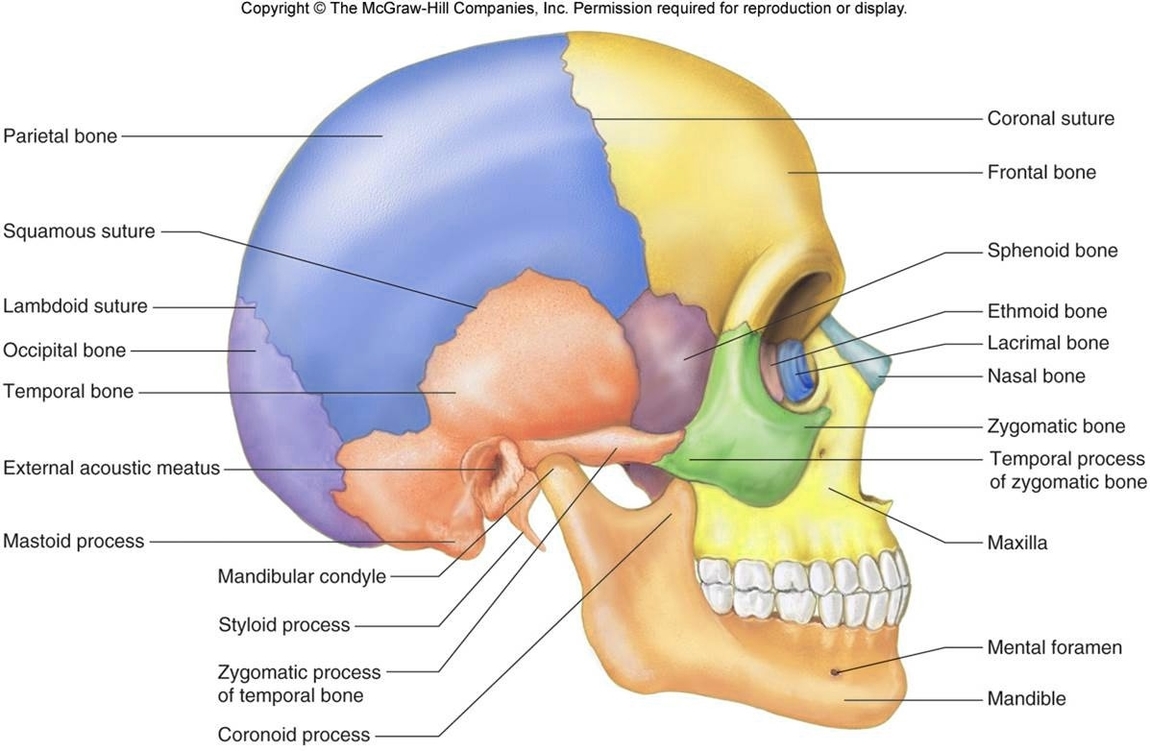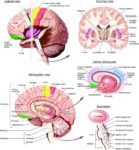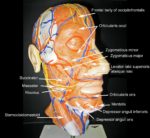The lateral view of the skull provides a comprehensive overview of the entire skull rather than focusing on any one region. This perspective is particularly useful in radiology, where it is employed to evaluate skull fractures, neoplastic changes, and conditions such as Paget’s disease.
The lateral skull showcases the large rounded brain case, the zygomatic arch, and the upper and lower jaws. The zygomatic arch, a notable feature, is formed jointly by the zygomatic process of the temporal bone and the temporal process of the zygomatic bone. The shallow space above the zygomatic arch is known as the temporal fossa.
The human skull consists of about 22 to 30 single bones, mostly connected together by ossified joints, known as sutures. The skull is divided into the braincase (cerebral cranium) and the face (visceral cranium). The primary function of the skull is to protect the most important organ in the human body: the brain. The brain is almost entirely enclosed by the cerebral cranium, with the exception of the foramen magnum and other foramina at the skull base, which serve as entry and exit points for blood vessels and cranial nerves.
The sphenoid bone, a key component of the skull, has a structure known as the greater wing that extends from the side of the body of the bone to curve backwards and laterally. The most posterior part of this projection is a triangular process that fits neatly into the ridge between the petrous and squamous portion of the temporal bone. The greater wing of the sphenoid contains the foramina for many structures, including the foramen rotundum for the maxillary branch (CNV/II) of the trigeminal nerve, and the foramen ovale, an oval-shaped foramen that allows the mandibular branch (CNV/III) of the trigeminal to pass through along with the accessory meningeal artery.
In conclusion, the lateral view of the skull offers a comprehensive perspective of the skull’s structure and is instrumental in diagnosing various conditions. It highlights the intricate design and function of the skull, underscoring its role as the protective casing for the brain and the gateway for numerous critical nerves and blood vessels.



